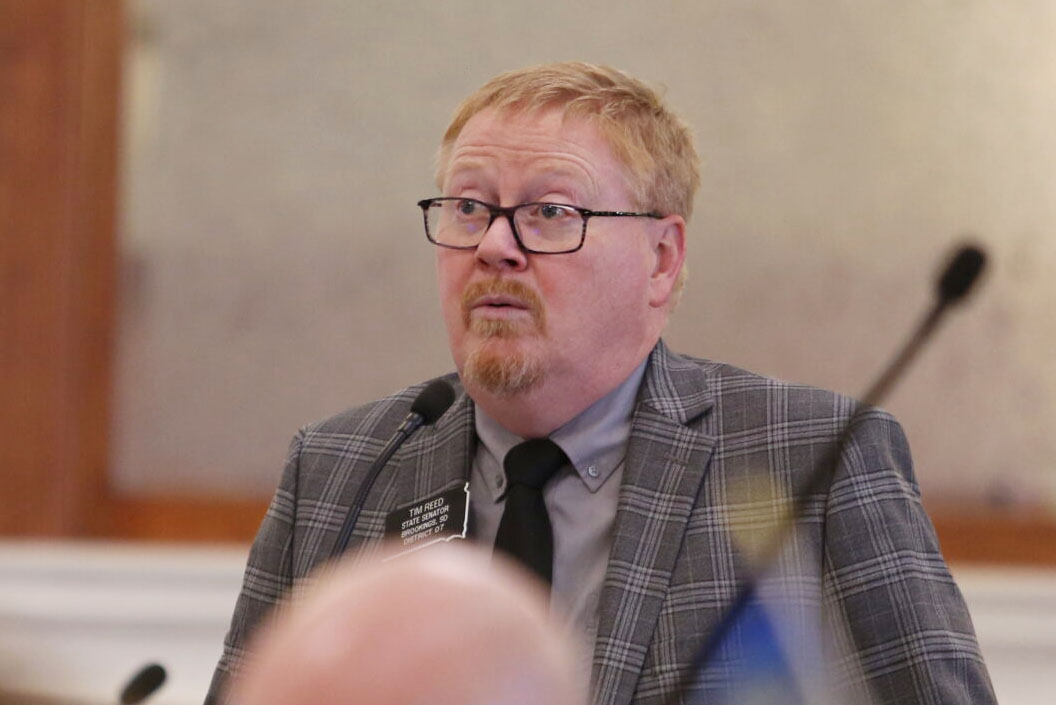
Makenzie Huber/South Dakota Searchlight – One of the first pieces in the long-term effort to address South Dakota’s child care needs cleared its first hurdle Wednesday at the Capitol in Pierre.
A bill that would require the state to study the cost of child care across South Dakota was unanimously approved by the Senate State Affairs Committee and will head to the Joint Appropriations Committee for further consideration.
The study required by the bill would include the cost of keeping and retaining workers alongside the impacts of inflation, population growth and business growth on child care providers. The study would also require the department to develop a cost estimation model for the state’s child care assistance program. The bill includes $250,000 to fund the study.
Prime sponsor Sen. Tim Reed, R-Brookings, leads the Brookings Economic Development Corporation and sees child care primarily as a workforce and economic development problem.
South Dakota suffers an estimated $329 million loss in productivity due to its inadequate child care landscape, according to a study from ReadyNation, a nonprofit organization focused on business and economic development across the country.
The bill’s study looks to better inform key stakeholders, including the private sector, so future partnerships can properly fund the “essential workforce service,” as proponents called the industry.
“It’s too expensive and too hard to find for parents, but yet it’s not expensive enough for child care operators to stay in business,” Reed said. “That’s what this study would help us do: find out what it truly costs, what it will take to make sure these centers can survive.”
There was strong support from child care providers and economic development organizations across South Dakota during the committee hearing. Kerri Tietgen, CEO of nonprofit child care provider Embe in Sioux Falls, explained to legislators that the nonprofit loses about $46,000 a year per classroom of infant and toddler students. There are 18 classrooms serving those children at Embe, and there is a waitlist exceeding 10 months.
“The business model for child care is not sustainable,” Tietgen said. “… This industry needs support.”

She added that it’s difficult to raise tuition any higher because parents already pay unaffordable rates for child care. Increasing efficiency is difficult due to regulations and licensing requirements in the industry, and cutting costs is also a struggle when about 80% of cost in the industry covers salary and benefits.
The child care industry is rife with turnover primarily due to low pay. Child care employees make an average annual salary of $25,490 in South Dakota, according to 2022 statistics from the Bureau of Labor and Statistics.
The state Department of Social Services was the sole opponent to speak against the bill, saying that the department is already required by the federal government to carry out market rate and actual cost analyses. The latest data will be available in a report this summer, and the department is also conducting a workforce and economic study of child care, said Alex Mayer, chief of the department’s Division of Children and Family Services.
Reed countered that the department’s efforts are narrow, specifically focusing on low income subsidies rather than the entire industry in the state.
The Joint Appropriations Committee, which prepares the state’s annual budget, will consider the bill next.
“When we talk about this overall, we’ve talked about this from a workforce standard and the economic impact that has,” said Sen. Casey Crabtree, R-Madison, before voting. “We know in South Dakota parents and private employers will lead the way in figuring out a solution, but this will give them the data.”
